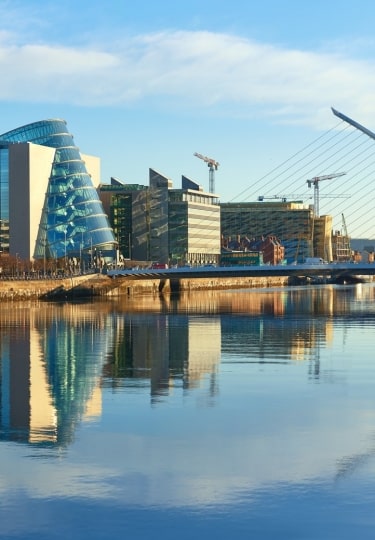Dublin is contrasts. It’s a world-class arts and culture destination; a city garbed in 1,000 years of history; and a revitalized capital of Ireland. One day in Dublin will achieve, above all else, a single, solitary goal: whet the appetite for a repeat visit.
For all of that, 24 hours in Dublin can give you an excellent grounding in this energetic, friendly city. It’s not a sprawling metropolis by any means, so a well-prepared traveler can quickly get under Dublin’s skin. You’ll stroll through the city’s classical Georgian squares, hear folk music in its narrow cobbled lanes, feel the cool onshore winds from Dublin Bay on your neck, and, slowly, begin to absorb the character of this storied city.
Of course, local boy James Joyce famously wrote over seven hundred pages about a day in Dublin. And he was writing prior to the blooming of the city’s new boutique whiskey producers, or the flourishing cafe culture. So be prepared to make some hard choices—and plans for a swift return to one of the best places to visit in Ireland.
8:30 a.m.: Go the Full Irish
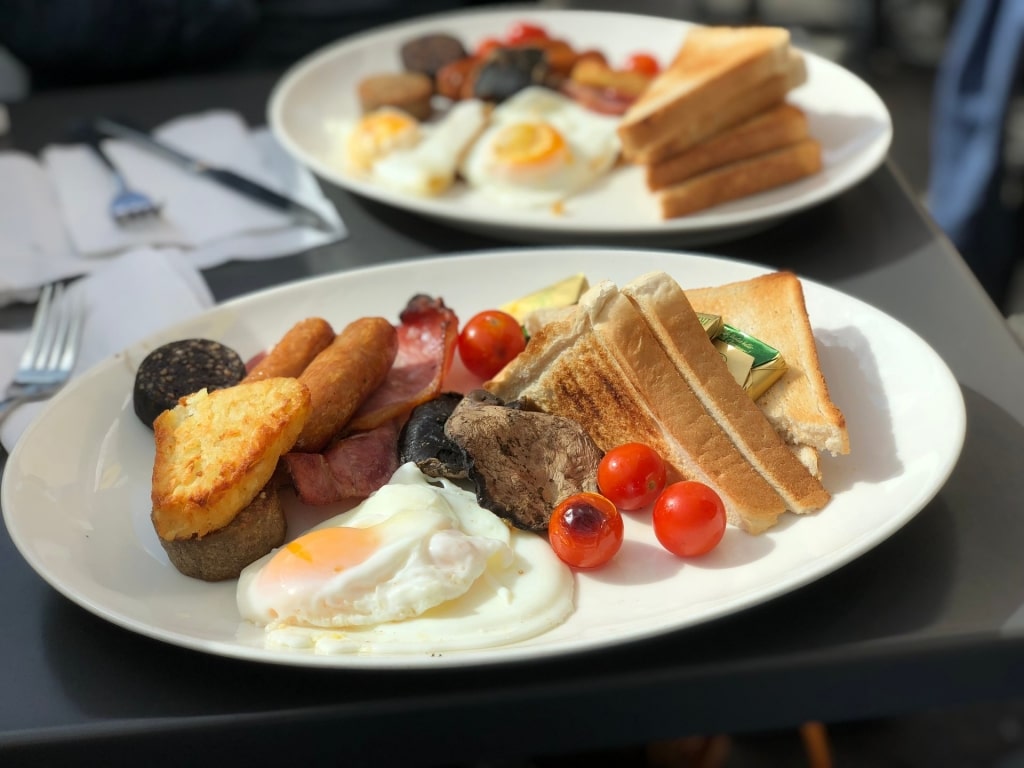
Traditional Irish breakfast
You have a full day ahead, so go straight to the pedestrianized cobbles of Grafton Street— one of Dublin’s principal shopping arteries—and find Bewley’s. The brick-and-mortar flagship location of longstanding Irish coffee and tea company Bewley’s, this towering art deco temple to a good brew opened in 1927. Besides a fine selection of the usual caffeinated morning essentials, Bewley’s also serves a commendably well-cooked full Irish breakfast.
What adds the “full” to the “Irish”? Beyond eggs and bacon, you’re served hand-tied sausages, both black and white puddings, cherry vine tomatoes, and that quintessentially Irish addition, brown soda bread. If you’d prefer half-Irish, there’s a lighter version, although you’re going to need the calories for your full day of fun.
Prefer just a coffee? In the last ten years, a so-called “third wave” of coffee culture has washed high quality, independent coffee producers into the city streets. Try Clement & Pekoe on South William Street or one of the 3FE outlets for a single origin sample of recent Dublin coffee history.
9:30 a.m.: Stroll the Georgian Quarter
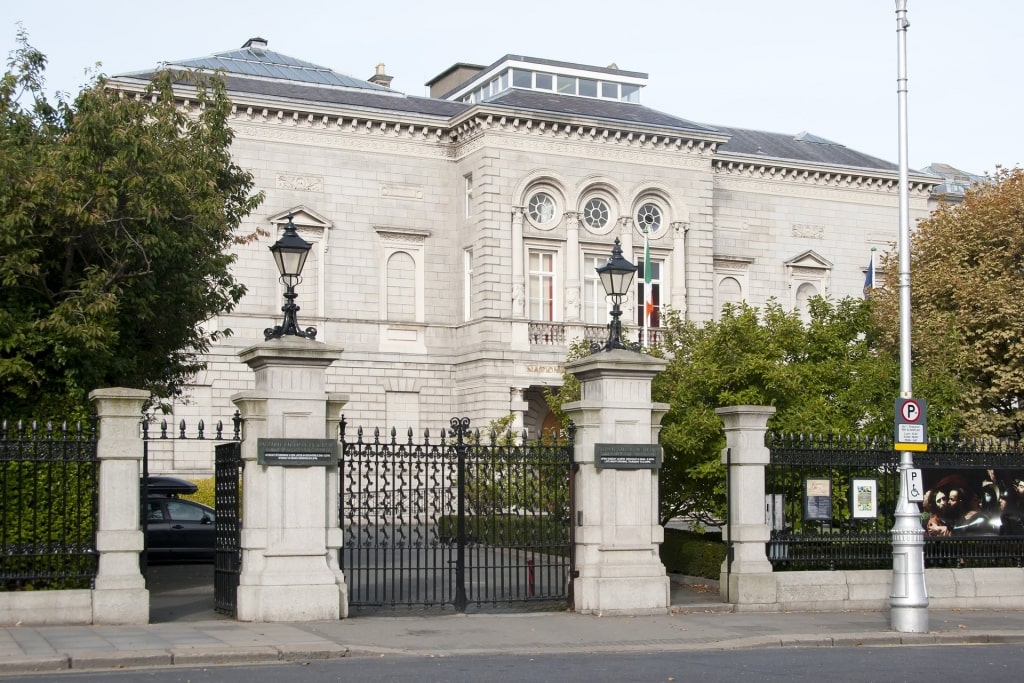
National Gallery of Ireland
Find the Georgian Quarter. Unhelpfully, there are two—one in the north and one in the south—but it’s the one south of the River Liffey that should be the priority with only one day in Dublin. Not only is it the handsome location of a cluster of top sights like St. Stephen’s Green and Trinity College, but it’s also the postcode for several of the city’s best museums, including Ireland’s National Gallery.
The Georgian Quarter is characterized by the period’s stately, ordered architecture. Look for tall sash windows on handsome brick townhouses, some almost entirely concealed behind a carpet of ivy. You can almost imagine the horse-drawn coaches clip-clopping by.
Read: Fun Things to Do in Ireland With Kids
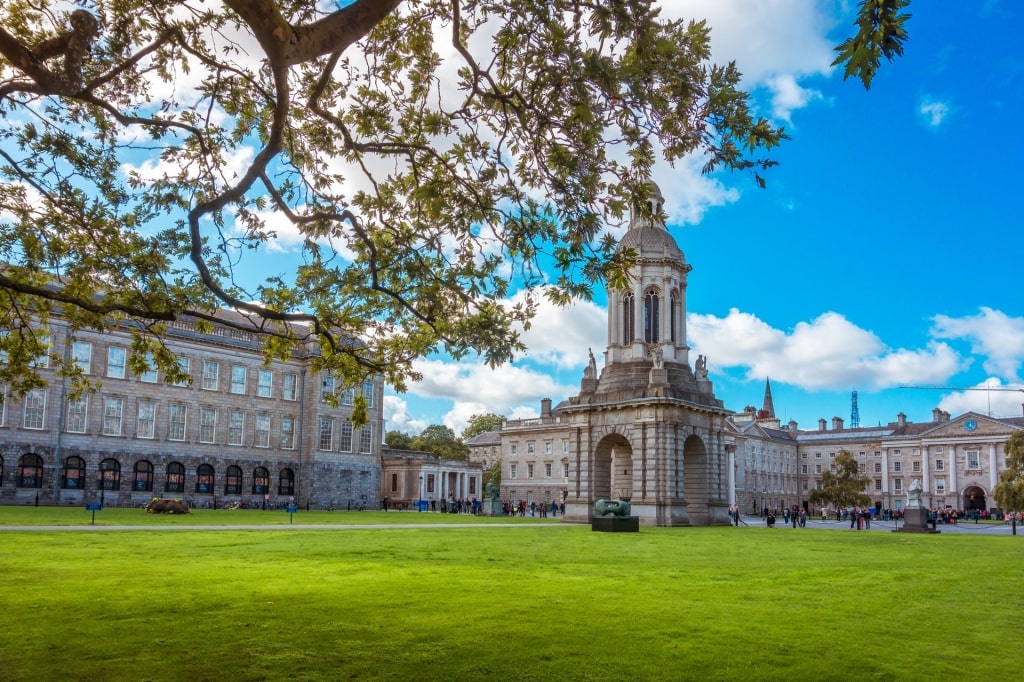
Trinity College
In the north of the district, you’ll find Trinity College. The country’s leading university, founded in 1592 by Elizabeth I, is the alma mater of such luminaries as Oscar Wilde and Francis Bacon. Most recently, this place of leafy squares and impressive Palladian buildings was the on-location backdrop for Dublin writer Sally Rooney’s transatlantic hit TV show Normal People.
Reserve a time slot to see the Book of Kells. Even older than Trinity College itself, this incredibly well-preserved artifact is a 9th-century manuscript that depicts the four gospels of the New Testament. The colorful calligraphy and the bright illustrations are remarkable to see in the flesh (and a sight you probably won’t see again, even on a return visit, as the pages are turned once every two months).
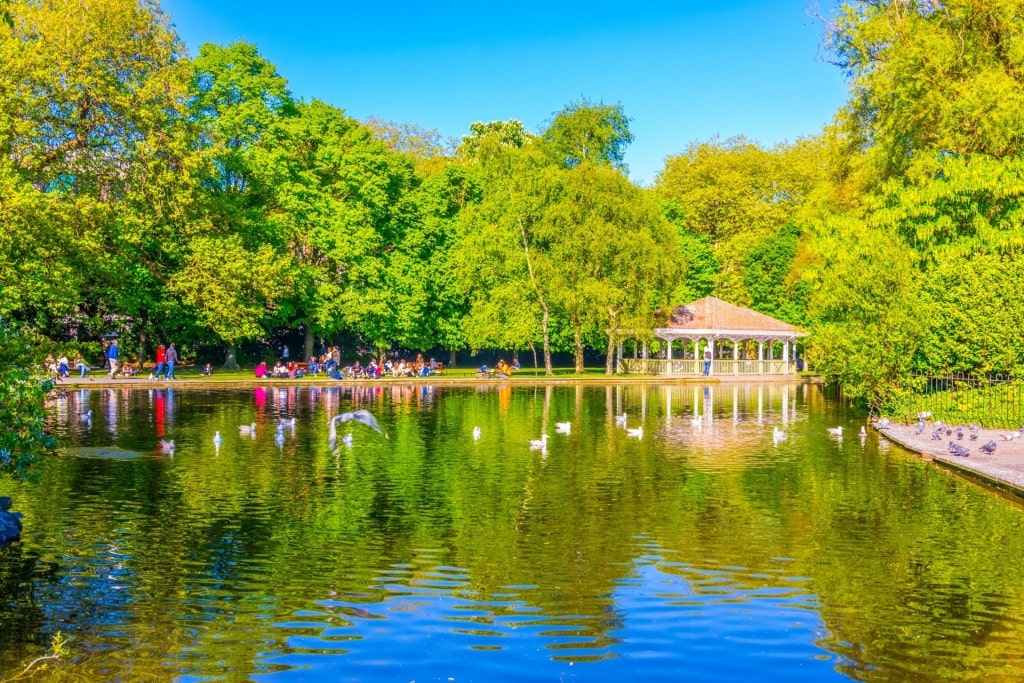
St. Stephen’s Green
After Trinity, head south to St. Stephen’s Green. Founded in 1663, what is the largest enclosed city square in Europe has evolved over time to become the splendid idling spot it is today. The Victorians added pathways and fences, although when Queen Victoria suggested she might rename the square in honor of her beloved Albert, her ideas were roundly rebuffed by the locals.
While you’ll find it serene, it hasn’t always been so. Stephen’s Green served as the backdrop to an armed fracas during the Easter Rising of 1916 when members of the Irish Citizen Army moved in and held the green. While they were facing off against the British Army, ceasefires were called to allow the groundskeeper enough time to feed the ducks.
Guided tours to fill you in on even more of the green’s intriguing history are available—just book at least a month in advance.
11:30 a.m.: Visit St. Patrick’s Cathedral
Looming through the oak and birch branches of Stephen’s Green, you’ll probably have glimpsed the impressive steeple of St. Patrick’s Cathedral.
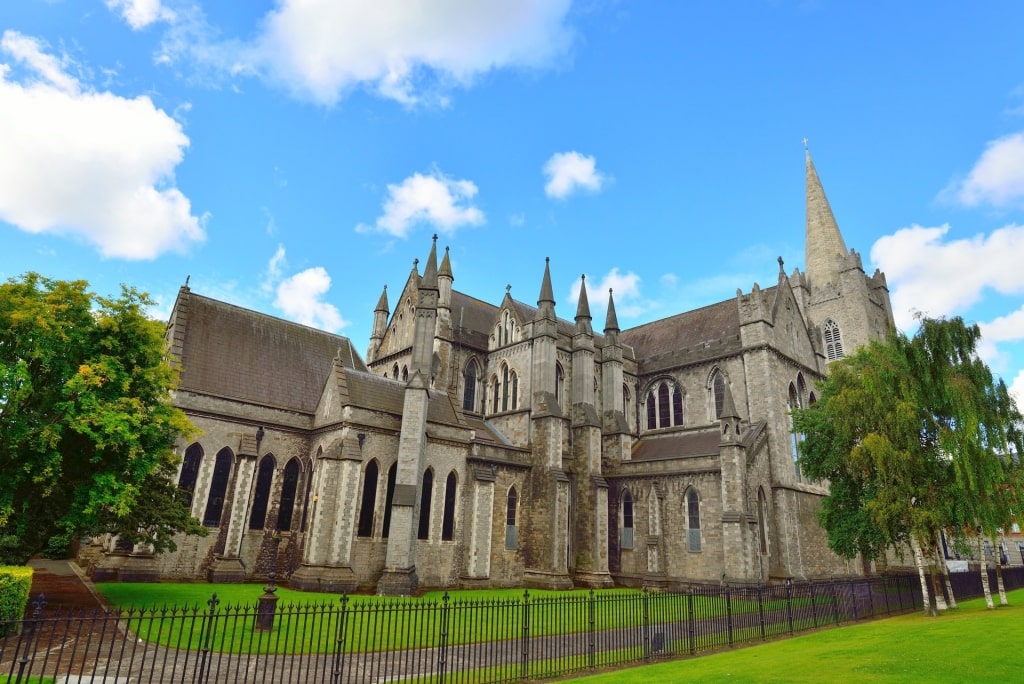
St. Patrick’s Cathedral
A ten-minute walk will take you to the broad doors of the national church of Ireland. This 12th-century Gothic landmark is named for the country’s patron saint, who reputedly turned Ireland from Celtic polytheism to the path of Christianity. Considering the importance of religion in Ireland, it’s an essential stop even with only one day in Dublin.
The cathedral is full of stories (besides the headline sacred ones). Take a guided tour to get under the cold stone skin of the place, or download the cathedral’s tour app and have a solo wander (ideally not during Mass).
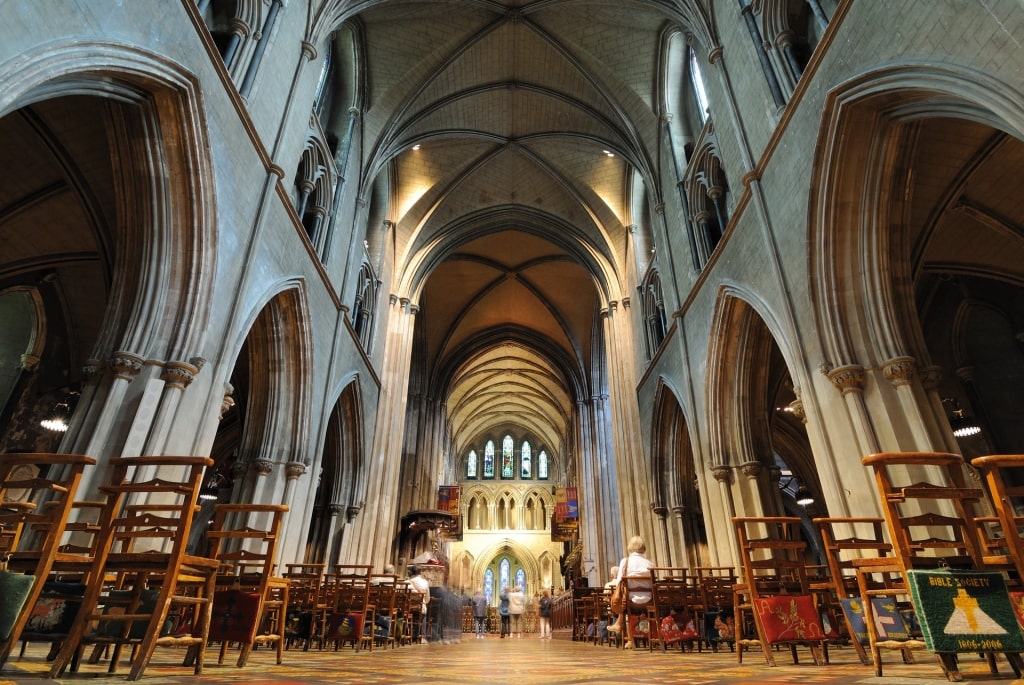
St. Patrick’s Cathedral
One of the highlights is The Door of Reconciliation. Two patriarchs of 15-century feuding Irish families brought an end to a dispute by shaking hands through a hole cut in the old cathedral door (leading to the phrase “chancing your arm”). The door in question is on display in the cathedral’s north transept.
1 p.m.: Marvel at EPIC: The Irish Emigration Museum
Having detoured to pick up some Dublin street food from Temple Bar Food Market, find your way to the River Liffey and the regenerated docklands district for the EPIC Museum. This award-winning museum, located in the restored CHQ Building, is concerned with the extraordinary reach and story of the 70-million-strong Irish diaspora. EPIC is an acronym for “Every Person is Connected”.
Descend into the 200-year-old vaults to discover a modern, interactive, and engrossing cultural experience. You’ll learn about the Irish roots of diverse celebrities such as Jeremy Irons, Stephen Colbert, and Barack Obama. If you begin to suspect your own “hidden” Irish heritage—and you will—speak to a genealogy expert at the Irish Family History Centre located in the museum. Your 24 hours in Dublin could end up giving you an entirely new perspective on who you are.
2 p.m.: Follow the Liffey
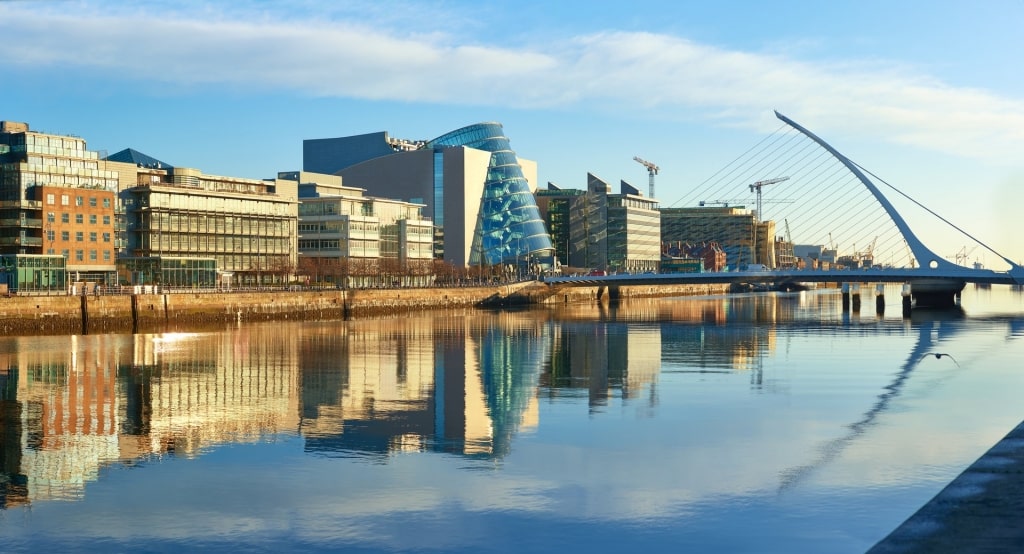
River Liffey
With an Irish lilt entering your voice after your EPIC experience, take a walk along the iconic River Liffey. Since its path cuts the city neatly in two, it’s one of the easiest and quickest ways to explore—perfect when you have only one day in Dublin.
Besides the bridges, which vary from the handsome Ha’Penny to the lugubrious Loopline, you’ll take in the changing neighborhoods and a procession of art pieces and monuments. Walk far enough and you’ll reach Phoenix Park, a surprising acreage of well-groomed wilderness in such a compact city.
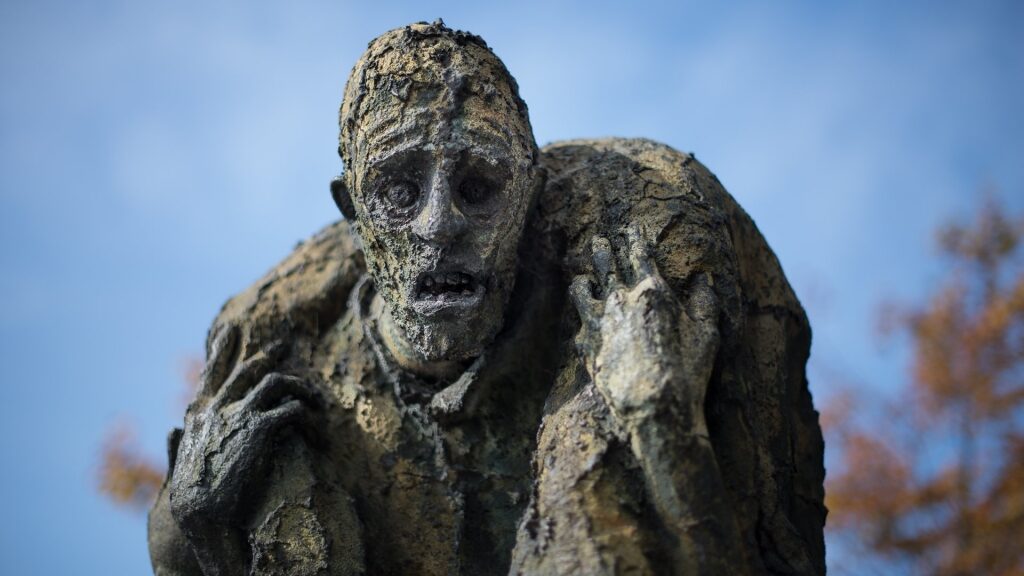
Famine Memorial
As for the art, two of the most significant pieces are found at Custom House Quay. The World Poverty Stone was laid to celebrate the UN’s International Day for the Eradication of Poverty, while the rather eerie Famine Memorial Statues commemorate Ireland’s Great Famine. An extension of the famine history, located on the water nearby, is The Jeanie Johnston—a 19-century replica of the kind of ship that transported the Irish to America.
2:30 p.m.: Browse the National Gallery of Ireland
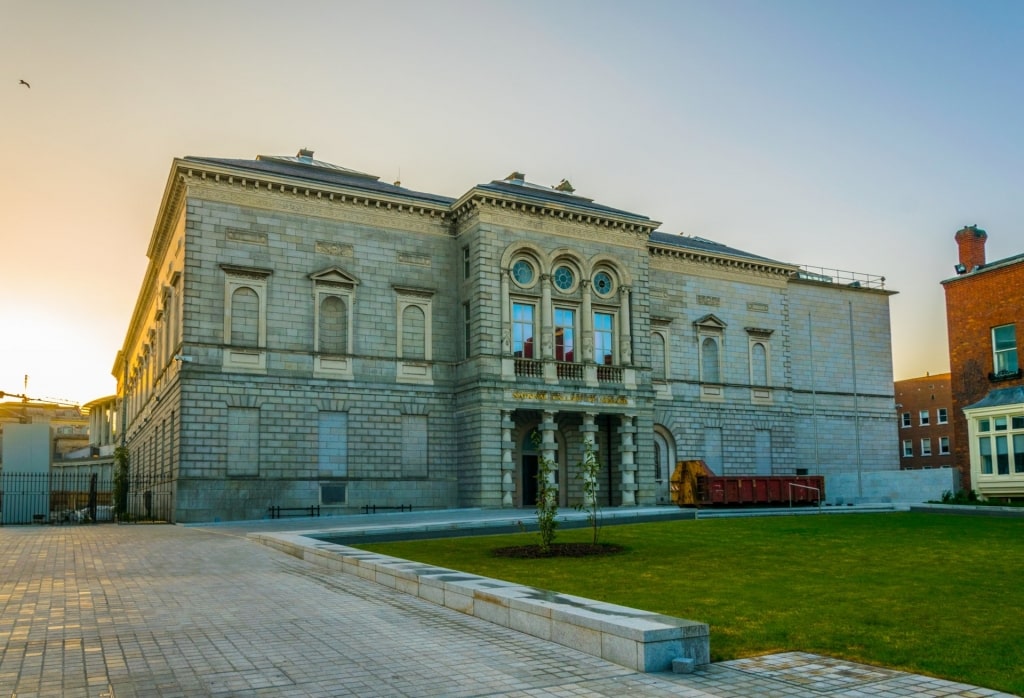
National Gallery of Ireland
One of the city’s most-visited attractions is the National Gallery of Ireland. Adjacent to Trinity College, there are two faces to this world-class collection of European art. One is Georgian and in keeping with its surroundings, while the new Millenium Wing looks like a cubist take on a French Foreign Legion outpost.
Whichever entrance you prefer, you’ll find your way into a modern and updated gallery that dates back to 1854. When it opened, it exhibited just over 100 paintings. Today, that collection has swollen to some 15,000 works, some of which date back to the 13th century.
Among this number are must-sees such as Picasso’s “Still Life with a Mandolin” and Monet’s “Argenteuil Basin with a Single Sailboat”. Take a break between ogling oils at the in-gallery cafe—its towering carrot cake provides a moist, sugary pick-me-up.
3:30 p.m.: Explore the Temple Bar District
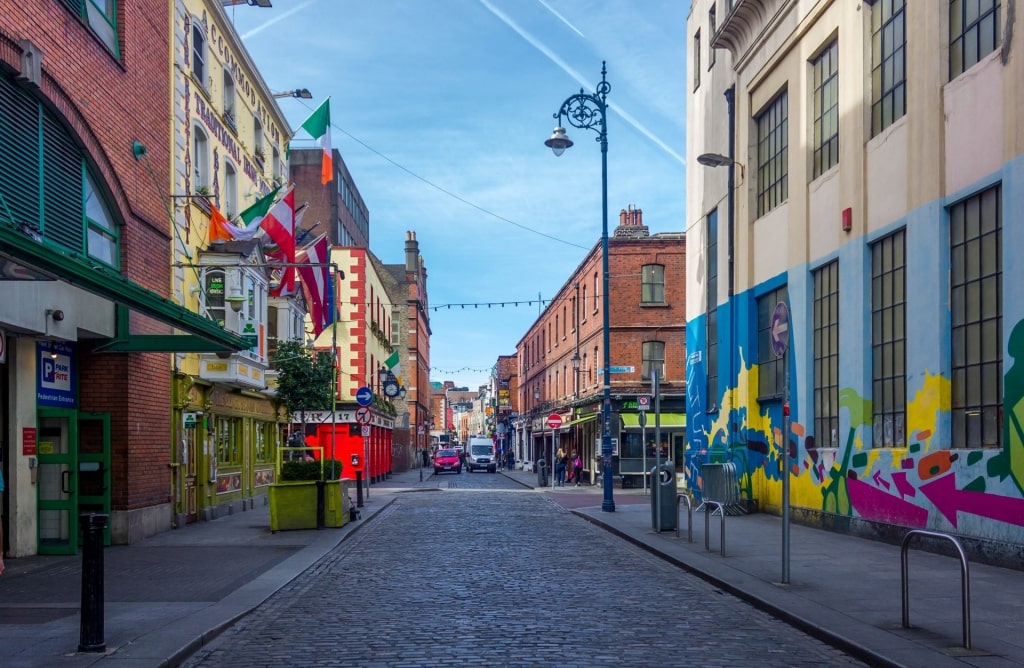
Temple Bar District
Further refreshments can be found in Dublin’s bohemian quarter, the Temple Bar District. This former riverbank was drained to make riverside garden space for 17th century Dublin’s well-to-do. Eventually, the area dropped out of fashion and became the city’s underbelly.
And so it remained until the 1990s. A regeneration scheme attracted artists into low-rent accommodation and breathed fresh life into the neighborhood. Today, it’s a social drinking mecca, with buskers on the streets and trad Irish bands in the pubs. Eclectic shops (stuffed leprechaun, anyone?) and more serious art galleries round out the offering as Dublin’s main place to meet up.
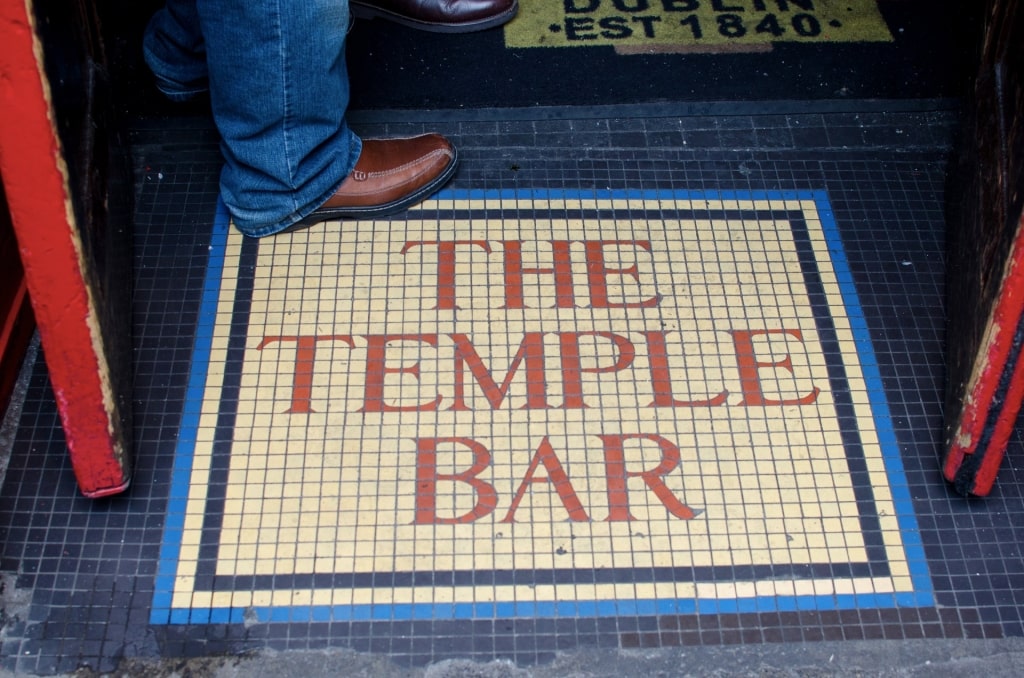
The Temple Bar
With only 24 hours in Dublin, a mid-afternoon refresher might be on the cards. Make a beeline for eponymous The Temple Bar Pub. You’ll find a superb selection of local craft beers—not to mention a strong claim on Ireland’s largest whiskey selection.
When you’re ready to exit Temple Bar, swing by the Ha’Penny Bridge, a cast-iron landmark elegantly thrown over the Liffey. It’s a good spot for a selfie reminder of your one day in Dublin.
4 p.m.: Make Cocktails at the Old Jameson Distillery
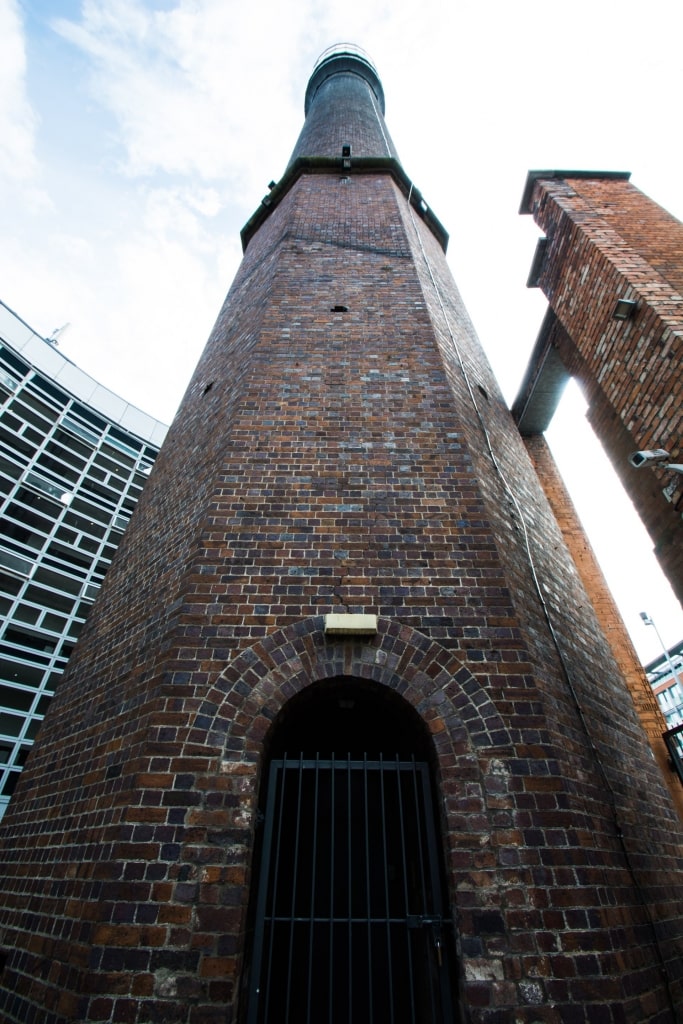
Old Jameson Distillery
In Smithfield, near Dublin’s heart, you’ll come across a shining copper still standing guard outside a bright green awning. Congratulations—you’ve found the Old Jameson Distillery.
A brand that has almost defined what Irish whiskey should taste like, Jameson has produced its characteristic uisce beatha (water of life) since 1786. This particular distillery, however, has ceased production and now moonlights as a museum and landmark to what was once the world’s largest whiskey brand.
In the late 1800s, Jameson was pumping out a million golden, oaky, malty gallons of its signature product and transporting it worldwide. Growth and popularity continued until the brand’s fortunes were dented in the early 20th century with the advent of Prohibition and the Irish War of Independence.
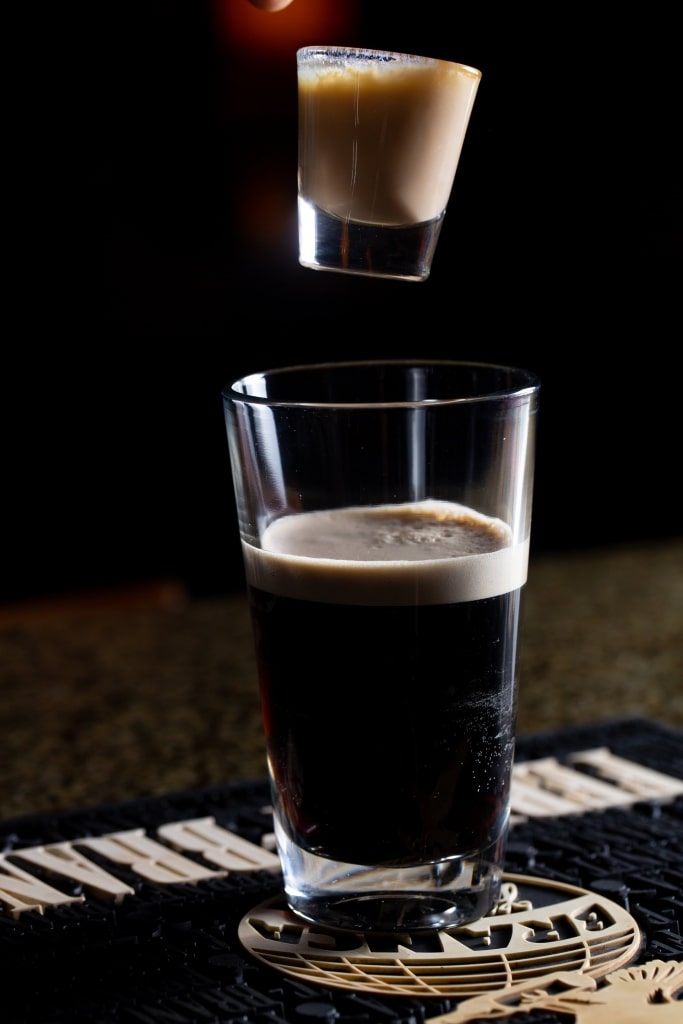
Jameson Irish Car Bomb
The distillery today offers Jameson lore (and probably a few residual fumes), as well as the truly excellent Whiskey Shaker class. This hour-long, mixologist-led master class trains you in the art of producing Jameson-focused twists on several classic cocktails. While you’re shaking and muddling, you’ll be inspired by the retelling of Irish myths and legends. Of course, after all that work, it’s time to taste.
7 p.m.: Dinner… and a dance?
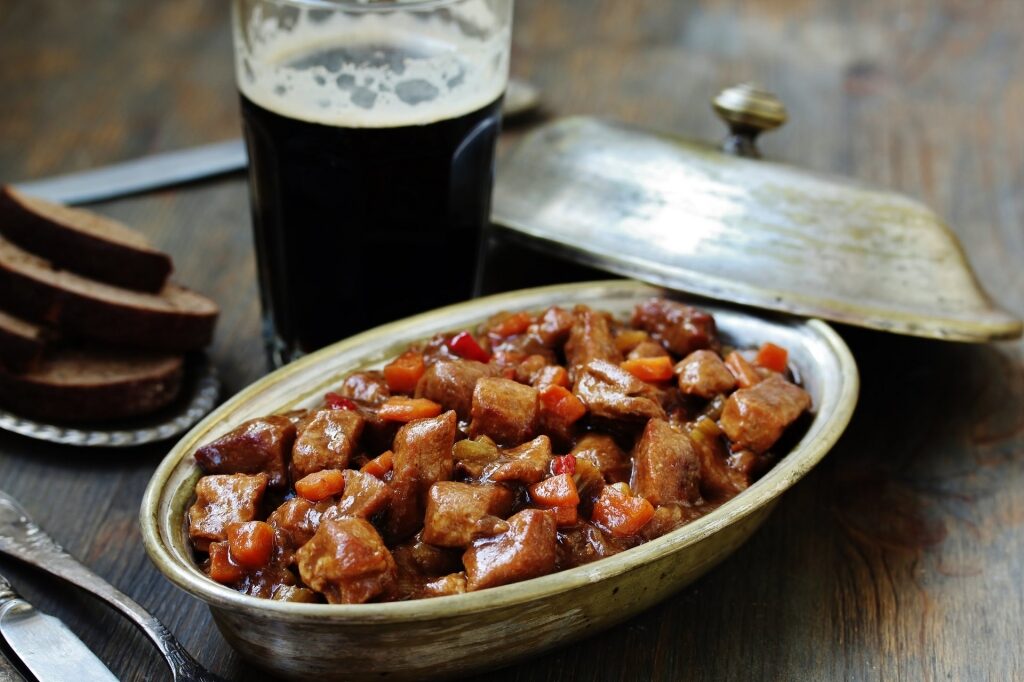
Guinness and lamb stew
Having now worked off your full Irish breakfast, you’ll have whetted your appetite for more classic Dublin cuisine. Achieve satisfaction by making your way to Delahunt on Camden Street.
This vintage-vibed, absolutely gorgeous restaurant/cafe/cocktail bar plates up superior Irish cooking. Find a cozy corner on the leather banquettes and revel in the knowledge that you’re finishing up your one day in Dublin at a location namechecked in James Joyce’s Ulysses. In the modernist classic, Delahunt was a grocer, and you can still see the skeleton of that business retained in this modern iteration.
Fancy a side of athleticism with your Guinness and lamb stew? Make your way out of the city center for live dancing at Taylor’s Three Rock Pub. Famous for being the nation’s largest thatched-roof pub, the thatching successfully keeps the rain off one of the capital’s most enjoyable evenings of live entertainment.
Grab a seat by the stage and soak up the house band’s traditional Irish music, accompanied by a leaping phalanx of world champion Irish dancers. After several delicious courses and a lively setlist, you might find yourself joining in with favorites like “Danny Boy” or “Whiskey in the Jar”—maybe after a smooth Irish coffee. It’s the perfect end to twenty-four hours in Dublin.
Read: Things to Do in Cork
Discover the highlights of Dublin on a cruise to Ireland with Celebrity Cruises. Explore the British Isles or venture further to Iceland while being transported on a cruise ship featuring world-class dining, incredible venues, and stylish suites and staterooms.
Browse our Dublin cruise itineraries and book your next unforgettable trip today.
